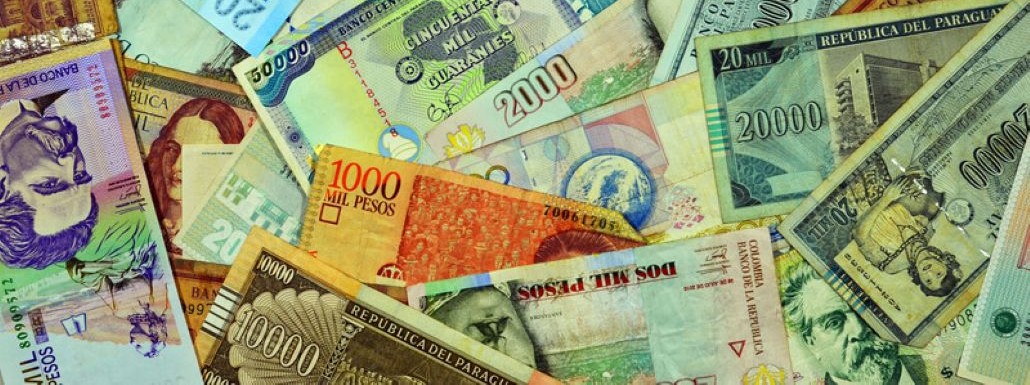How Foreign Investors Are Driving Miami’s Real Estate Boom
Financial incentives, abundant opportunities, and a business-friendly environment have made Miami one of the top three U.S. commercial real estate markets for foreign investors.
“Not only do we have domestic investors from New York, Chicago, and California, but we also have investors from other markets bringing their wealth here because they see that Miami still offers value compared to other cities,” said Alfredo Pujol, team leader at Compass Real Estate and 2026 chairman of the Miami Association of REALTORS.
In 2025, Miami-Dade County’s commercial sales volume rose 30%, led by strong growth in the multifamily sector, where foreign investors are playing an increasingly significant role.
“The past few years have seen an uptick in foreign capital investment in institutional-size increments,” said Roberto Pesant, executive managing director at Cushman & Wakefield’s institutional multifamily advisory team in Miami. “This has taken form in several ways.”
Global Players Moving In
Foreign developers are expanding their presence in Miami by opening local offices, taking stakes in operating companies, and acquiring large-scale projects. Swiss firms Empira Group and Partners Group both established Miami offices to grow their Florida portfolios, while Brazilian investor Opportunity Fundo de Investimento Imobiliário partnered with local developer Leste Group to invest $1 billion in new projects.
The largest multifamily deal in Southeast Florida this year came from Spanish billionaire Amancio Ortega’s Pontegadea, which purchased the 43-story Veneto Las Olas luxury apartment tower in Fort Lauderdale for $165 million in June. The all-cash acquisition from the Related Group involved 259 newly built units.
Despite broader economic headwinds, foreign capital continues to shape Miami’s multifamily and condominium markets.
“While high interest rates and tighter lending have slowed construction in many U.S. metros, South Florida’s appeal remains unmatched—especially for international investors seeking stability, income, and lifestyle upside,” said Alyssa Soto, co-founder of New York-based Powered by DMT: Real Estate Marketing & Brokerage.
Latin American Demand Leads the Way
Although European and Asian investment has moderated due to currency fluctuations and geopolitical uncertainty, inbound capital from Latin America continues to rise. Political and economic instability across the region has made South Florida real estate a reliable hedge against inflation and volatility.
“The city’s gateway status and cultural ties to Latin America make it a natural investment destination for buyers from Colombia, Brazil, Venezuela, Mexico, and Argentina seeking financial stability,” Soto said.
Strong rent growth, high occupancy rates, and Florida’s favorable tax and regulatory climate add to Miami’s appeal—especially for high-net-worth buyers seeking lifestyle and legacy investments.
According to the Miami Association of REALTORS, international buyers accounted for 49% of all condo sales over the past 18 months, up from roughly 10% in previous years. Latin American investors made up 86% of those purchases.
Lifestyle and Global Visibility
Miami’s combination of economic strength, global visibility, and lifestyle advantages further drives investor confidence. The city welcomed 28 million visitors last year, generating roughly $22 billion in economic impact.
“It now ranks among the top U.S. hotel markets, with 16 restaurants earning Michelin Stars in 2025 alone,” noted Jon Gitman, partner at BridgeInvest.
Developers are also evolving their strategies to attract foreign capital.
“We see this on the financing side with EB-5 visa structures,” Gitman explained. “Foreign investors can provide equity or debt to finance construction, and in return, they may obtain U.S. residency.”
Luxury and branded developments blending private residences with hospitality—like condo-hotels—are also drawing international attention. Gitman highlighted 13th Floor Investments and Forse Holdings’ partnership with Dubai-based Kerzner International to debut SIRO, a wellness-focused luxury condo-hotel brand, in Miami.
Who’s Buying and Where
A Q3 2025 report from MMG Equity Partners found that 63% of South Florida real estate capital comes from private sources, signaling a shift toward more personalized, hands-on investment strategies.
Foreign buyer activity remains robust, especially in new-construction condos and high-end multifamily assets. Latin American investors—many from politically or economically unstable countries—are the most active.
At the institutional level, sovereign wealth funds from the UAE, Qatar, and Saudi Arabia, as well as European and Canadian funds, continue to invest in Miami’s office, hospitality, and mixed-use markets. While some North American and European funds are more selective, they favor core and core-plus opportunities with strong sponsorship and visibility.
Major international players such as Swire Properties, developer of Brickell City Centre, also remain active. Swire is now redeveloping the Mandarin Oriental Hotel into an ultra-luxury mixed-use project.
Market Fundamentals Remain Strong
Despite record construction, supply still struggles to meet demand. According to MMG, 9,802 units were completed in 2025 and 9,219 were absorbed, keeping vacancy below 5%. Rents average $2,385 per month, the second-highest in the U.S. after the San Francisco Bay Area.
While rent growth has slowed to below 2%, Miami’s residential market remains resilient, with 100 projects totaling 30,500 units under construction across South Florida—16,100 of them in Miami. This pipeline equals 7% of existing inventory, ranking the region second nationally for active multifamily development behind Charlotte (8.1%).
“Tariffs have had little effect on Miami’s real estate market,” Pujol noted. “We have strong relationships with these countries, so Miami will remain the place they want to do business and live.”
Foreign buyers’ share of South Florida’s residential market is five times the U.S. average.
“Foreign buyers accounted for 10% of sales volume in 2024,” Pujol added. “Miami right now is the best in the world at bringing equity and investors from all segments together—and this momentum isn’t slowing anytime soon.”
Source: Multi-Housing News



